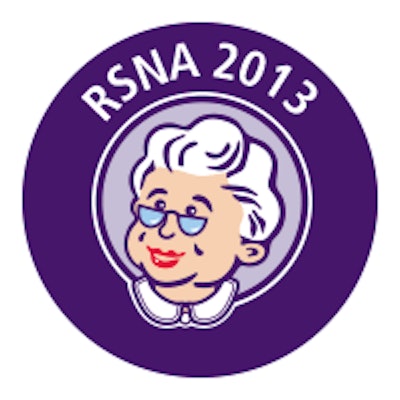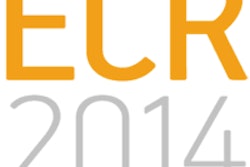
CHICAGO - What's your coronary calcium score? The answer may well depend on who made your CT scanner, according to a presentation on Monday at RSNA 2013.
Dutch researchers who carefully scanned a series of cadaver hearts brought up to speed were surprised to see significant differences in scores -- as much as 25% -- depending on which manufacturer's scanner was reporting the results.
Using models from Toshiba Medical Systems, GE Healthcare, Siemens Healthcare, and Philips Healthcare, calcium scores in the same heart varied in some cases by hundreds of points. There was also some variability when the scans were repeated, the group reported, but not nearly as much as the gap in scores between manufacturers.
"The state-of-the-art CT scanners from the four major vendors resulted in different Agatston scores, volume scores, and mass scores, and these differences may result in different treatment strategies," said Dr. Martin Willemink from University Medical Center Utrecht.
 Dr. Martin Willemink, from University Medical Center Utrecht, presented the study results.
Dr. Martin Willemink, from University Medical Center Utrecht, presented the study results.
In evidence accumulated over decades, calcium scores derived from electrocardiogram (ECG)-gated, unenhanced, low-dose CT scans of the heart have been shown to strongly predict future cardiac events. These scores can therefore be used to reclassify an individual's cardiovascular risk based on traditional risk measures such as the Framingham score, which segregates individuals into low-, medium-, and high-risk groups for future cardiac events.
Based on the Framingham model, patients at low risk need no treatment, while those at high risk do need treatment. However, how to handle the vast group of intermediate-risk individuals -- some 40% of U.S. adults, according to American Heart Association criteria -- is unclear, which is where calcium score can really clarify matters, Willemink said.
Calcium can be quantified in calcium scores, in the volume of calcifications, and by calcium mass, but Agatston score (ranging from less than 100, representing low risk, to greater than 500, representing high risk) is by far the most widely used metric. The current study sought to evaluate whether the different scanner models led to significantly different calcium scores.
Willemink and colleagues, including Dr. Richard Takx; Dr. Mathias Prokop, PhD; Dr. Johan de Mey; Dr. Marco Das; and Dr. Pim de Jong, PhD, examined 15 ex-vivo human hearts (14 of which had coronary calcium) using state-of-the-art scanners from each manufacturer.
Each heart was installed in an anthropomorphic chest phantom with a cylindrical recess and scanned using protocols as similar as possible -- for example, no contrast, prospective ECG triggering with a simulated heart rate of 60 beats per minute, and sequential mode scanning, with a similar radiation dose for all four scanners.
Median scores varied significantly by scanner model -- from 20% to 25%, Willemink said.
| Median (and interquartile range) calcium scores by vendor | |||||
| Agatston score | Calcium volume (mm3) | Calcium mass (mg) | |||
| Philips | 353 (172-1246) | 290 (144-975) | 84 (42-326) | ||
| Toshiba | 410 (177-1454) | 326 (148-1164) | 85 (43-337) | ||
| GE | 469 (183-1381) | 169 (84-497) | 69 (35-246) | ||
| Siemens | 332 (114-1135) | 251 (82-883) | 70 (27-245) | ||
CT scanners from different vendors generate significantly different calcium scores, Willemink concluded, though the noted several study limitations.
"First, we used nondynamic ex vivo hearts, so maybe the results would have been different if we had used dynamic hearts," he said. "Second, the calcium score of the hearts were pretty high, and third, we don't know the effect of reclassification of intermediate-risk patients. So now we are doing further research to evaluate these factors."
Scans were repeated for five hearts, and small differences were seen in subsequent scans using the same vendor and the same heart; however, there was less variation between scans than between vendors, Willemink said in response to a question from the audience.




















